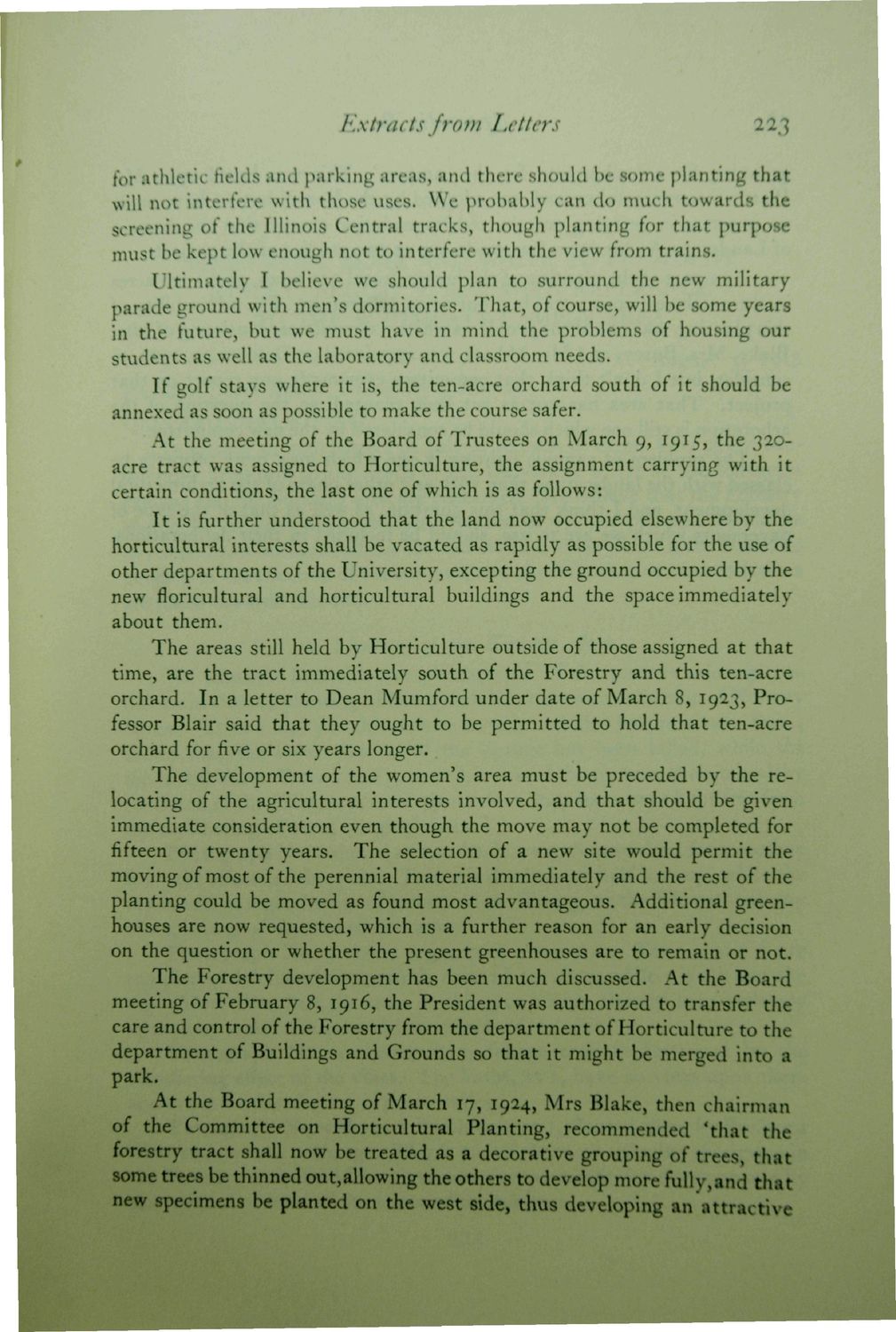| |
| |
Caption: Book - 30 Year Master Plan (Tilton & O'Donnell)
This is a reduced-resolution page image for fast online browsing.

EXTRACTED TEXT FROM PAGE:
Extracts from Letters 22 for athletic fields and parking areas, and there should be some planting that will not interfere with those uses. We probably can do much towards the screening of the Illinois Central tracks, though planting for that purpose must be kept low enough not to interfere with the view from trains. Ultimately I believe we should plan to surround the new military parade ground with men's dormitories. That, of course, will be some years in the future, but we must have in mind the problems of housing our students as well as the laboratory and classroom needs. If golf stays where it is, the ten-acre orchard south of it should be annexed as soon as possible to make the course safer. At the meeting of the Board of Trustees on March 9, 1915, the 320acre tract was assigned to Horticulture, the assignment carrying with it certain conditions, the last one of which is as follows: It is further understood that the land now occupied elsewhere by the horticultural interests shall be vacated as rapidly as possible for the use of other departments of the University, excepting the ground occupied by the new floricultural and horticultural buildings and the space immediately about them. The areas still held by Horticulture outside of those assigned at that time, are the tract immediately south of the Forestry and this ten-acre orchard. In a letter to Dean Mumford under date of March 8, 1923, Professor Blair said that they ought to be permitted to hold that ten-acre orchard for five or six years longer. The development of the women's area must be preceded by the relocating of the agricultural interests involved, and that should be given immediate consideration even though the move may not be completed for fifteen or twenty years. The selection of a new site would permit the moving of most of the perennial material immediately and the rest of the planting could be moved as found most advantageous. Additional greenhouses are now requested, which is a further reason for an early decision on the question or whether the present greenhouses are to remain or not. The Forestry development has been much discussed. At the Board meeting of February 8, 1916, the President was authorized to transfer the care and control of the Forestry from the department of Horticulture to the department of Buildings and Grounds so that it might be merged into a park. At the Board meeting of March 17, 1924, Mrs Blake, then chairman of the Committee on Horticultural Planting, recommended *that the forestry tract shall now be treated as a decorative grouping of trees, that some trees be thinned out,allowing the others to develop more fully,and that new specimens be planted on the west side, thus developing an attractive
| |